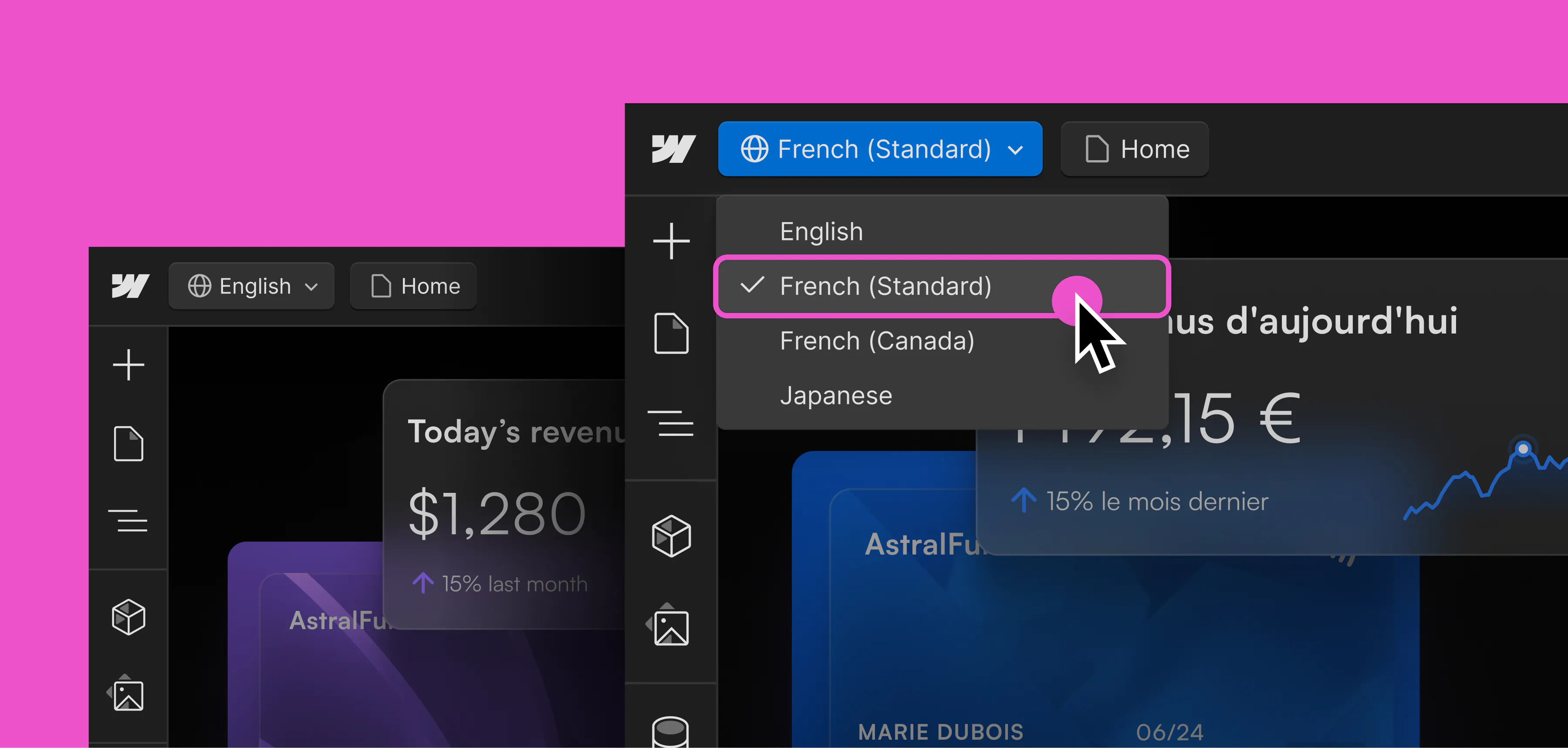Even with 8+ billion people — our world is more connected than ever.
With the rapid rise of digital connectivity, businesses have become borderless, allowing them to develop relationships with customers anywhere around the globe. It’s no wonder then that 66% of businesses are gearing up to expand globally within the next two years as part of their growth strategy.
Not only does international expansion help companies reach an entirely new and diverse group of customers, it can also boost revenue. Other key benefits of going global include an increased competitive advantage, wider market reach, and more access to top talent around the world.
However, expanding into new markets is no easy feat — it’s one that requires more than a one-size-fits-all approach. What works in your home country won’t always work in new locales due to the vast differences in language, beliefs, preferences, and cultural norms, which is why it’s so essential organizations take the time to develop a comprehensive localization strategy before expanding and scaling globally.
Whether you’re designing a website or kicking off a marketing campaign, connecting with new audiences on an emotional level is key. Not only does this mean communicating in their native language, but also developing authentic experiences designed around users’ expectations, needs, and wants.
Let’s take a closer look at why building an effective localization strategy is key to attracting and retaining customers, and strategies for how today’s businesses can expand their global footprint.
Localization builds trust and brand equity in new markets
Localization — the ability to adapt your digital content, visuals, and product information to suit specific regional markets — takes internationalization a step further, helping organizations deliver more relevant content to their customers, as well as provide hyper-personalized digital experiences.
This ability to meet or exceed customers’ expectations is critical to developing brand credibility, and in turn, a loyal customer base.
The first step toward gaining brand credibility and traction in new markets is developing marketing strategies that can earn your potential customers’ trust. Remember: in some cases, consumers in different parts of the world may know very little – or even nothing – about your brand. That means you’ll have to work even harder to connect with them.
Start by analyzing each locale and unpacking its cultural norms and nuances, which extends far beyond just language differences. You can then use these insights to help design your customer experience (CX) for new markets.
Localization is vital to your customer acquisition strategy
In today’s hyper-digital world, your website is the face and personality of your brand, making it your most valuable marketing asset. That’s why as a business begins to expand into new regions, website localization is no longer a nice-to-have – it’s mission critical.
Research shows that people quickly navigate away from a site if it’s hard to use, difficult to understand, or not available in their native language. In fact, 40% of customers will not make an online purchase in a foreign language.
By localizing your website, you can eliminate any friction that might cause a consumer to abandon your site while also establishing a personal connection with them — which is key to your customer acquisition strategy. And while having several languages on your website is table stakes, translating language is just one part of localizing your website.
Customizing your site for the different regions you serve should be applied to all elements of your website – from images and what content is displayed, down to the styles, layout, and colors on your site.



















Localization is now available for all customers
Website localization best practices
Localizing your website is one of the biggest drivers of customer satisfaction in new markets: 56% of online consumers say that having information in their own language on a site is even more important than price.
It also offers a low-investment, high-reward marketing strategy that your team can have full control over. By adjusting site content for different audiences, you can enhance the effectiveness of your messaging and targeting, too. Localization also increases site engagement, drives higher conversion rates, and improves customer loyalty.
But in order to reap the benefits of website localization, teams need a foolproof localization strategy in place that helps them deliver on their goals. Below, let’s explore some best practices businesses can start to implement today to get localization right.
Tailor your content and site design to different locales
When localizing your site for new audiences, it’s critical to consider every element – colors, layout, typography, and images. In other words, your site should “meet your visitors where they’re at” with a relevant experience that’s both cohesive and consistent. This is the most effective way to maximize engagement and build a connection with potential customers. Here’s how to get started:
Spend time researching design trends and norms in your target markets
Before you begin planning your site design, it’s important to research design trends and do’s and don’ts when it comes to marketing in your target regions. For instance, Western countries trend towards sleek, minimalistic design with more scrolling to get through the content, while some East Asian countries (e.g., Japan and China) prefer more maximalist designs with tons of content packed into shorter pages.
As stated before, colors can also take on different cultural meanings. For example, red symbolizes luck in some countries, while it evokes danger and caution in others. Nuance is critical to localizing experiences, so detailed research is key.
Customize your content
Tailor each content element on your site that’s relevant to the locale – from imagery and marketing promotions to blogs and articles. For example, if you’re using a photo of a famous landmark, consider swapping it for a more recognizable and proximal landmark for a given locale.
Validate translations with native speakers
If your site is only available in one language, you’re leaving potential customers and business opportunities on the table. In fact, 60% of Webflow customers are outside of the U.S. and over 70% of sites built on Webflow get traffic from countries with different official languages.
Language translation isn’t as simple as converting English words into a different language: tone, humor, cultural relevance and idioms must all be considered. Your punny marketing tagline can be completely unintelligible if directly translated to say, French, and even possibly offensive.
While AI and machine-powered translation tools can deliver an excellent first pass, having a native speaker review your content before it goes live is essential. A native speaker can ensure linguistic accuracy and cultural appropriateness, and even offer suggestions to maximize the impact of your messaging.
Make sure your site is discoverable by your target audience
Even the best localized sites won’t perform if they’re not attracting the right audience. That’s why it’s critical to optimize your site for international SEO and drive traffic from your target markets. Let’s explore some key considerations that meaningfully impact your organic discoverability.
Choosing the right URL structure
A subdirectory URL structure for localized sites (website.com/es for your Spanish site) enables you to maintain domain authority, thus yielding better results than a subdomain URL structure (es.website.com), which is on a separate domain from your primary site. That said, you may need your localized sites to sit on different domains for business reasons, e.g. if a business has a completely different brand in Japan.
Generating a global sitemap
Having a properly organized sitemap with ‘hreflang’ tags included is essential for search engine crawlers to understand how your various localized pages are related to one another.
Localizing your metadata
Don’t forget: your metadata content should be localized across pages for each supported locale. Your metadata tells search engines how to read and display sites on search engine result pages (SERPs), so ensuring this content is optimized for different locales is critical to your international SEO strategy. This includes meta titles and descriptions.
Reach new heights with a robust localization strategy
In today's digital-first world, businesses must think beyond their home market to drive growth. Successful global expansion starts with localized experiences, and a great place to kick things off is with your website. For anyone looking to take their digital strategy to the next level, making your site visitors feel right at home – no matter where their home may be — is key, and implementing a localization strategy for your site is a critical determinant of your ability to do so. If you’re interested in learning more about localization and Webflow’s native solution, learn more today!

Unlock worldwide scale
Learn how Webflow Localization can help you customize your site for a global audience and drive business growth in this free webinar.
































